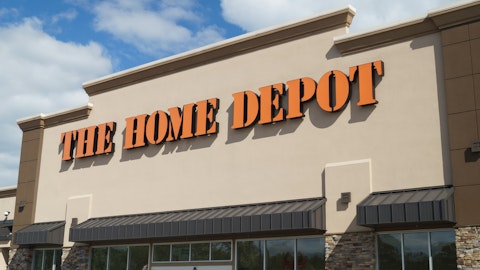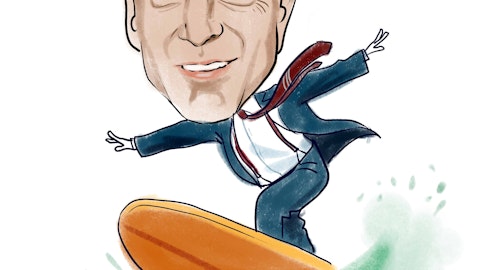Lori Koch: Yes. If I can just add to, we referenced the market research inventory index for semi to get an understanding of what inventory exists in the channel. And right now, usually, it says it kind of goes into surplus mode when the inventory index is above 1.2. We’re looking to be in that €“ butting up against the 1.2 as we close the first quarter. And the second quarter to our earlier point is the peak where it gets a little bit higher than 1.2, and then it starts to come back down. For reference, back at the last semi downturn in the late 2018, 2019 downstream, it was much higher. So it doesn’t feel like we have the same dynamics going on at what we had back then. But it does feel like there is more in the channel than where we were definitely last year at this time, we were kind of at a below one level with respect to the inventory index.
Scott Davis: Okay, I am going to stick to one question. It’s main issue for me. Thank you and best of luck.
Ed Breen: Thanks, Scott. Good to hear from you.
Lori Koch: Thank you.
Operator: Your next question comes from the line of Steve Tusa from JPMorgan. Your line is open.
Steve Tusa: Hi, guys. Good morning.
Ed Breen: Good morning, Steve.
Steve Tusa: So just looking at the guide, I think you guys have like $0.60 or something like that of tailwinds off of the 340 base kind of gets to just above $4. The low end of the range at 350 just seems like what’s embedded in the low end of that 350 range? I feel like the math gets us to something a little bit higher, at least at the low end?
Lori Koch: Yes. So the low end on both the top and bottom line really assumes not much improvement coming out of Q1. So a little bit mainly driven by seasonality, but not a lot of recovery in the end markets that we had spoke about. So it is more on the pessimistic side. We believe a lot of indicators that we’re seeing and the conversations that we’re having with our customers would suggest that wouldn’t come to fruition, but we wanted to bucket it on the low end just to be cautious.
Steve Tusa: Yes, got it.
Ed Breen: I mean, Steve, it would be more a global recession scenario. So we’re just bracketing it. But I would point you to the midpoint of our guidance is we’re obviously trying to zero in at.
Steve Tusa: Yes, that’s where we are anyway. I saw some news on an employment contract. I got a lot going on this morning. But can you just maybe give us a little bit of color there for you?
Ed Breen: Yes, Steve. So I had a contract in place, I think it was a 3-year contract that ends at the end of this calendar year. And a question I get pretty frequently from investors is that your retirement date because that’s when your contract expires. So the Board and I wanted to take that off the table. I’m going to continue employment after the end of the year. And I don’t need a contract anymore because some of the stipulations were back in from the DowDuPont days. And so I’m just an at-will employee, but excited to continue after the end of the year.
Steve Tusa: Okay, great. Thanks a lot, guys.
Ed Breen: Thank you.
Operator: Your next question comes from the line of Vincent Andrews from Morgan Stanley. Your line is open.
Vincent Andrews: Thank you, and good morning, everyone. You guys had really strong pricing in 2022, obviously, to get after that $800 million of inflation. How do we think about that price cost relationship in €˜23? Presumably, there’ll be parts of your business that will hopefully see some deflation, and then maybe wages and stuff are still a headwind. But how should we be thinking about carryover pricing into €˜23? And how you’ll manage pricing where you might see some deflation?





